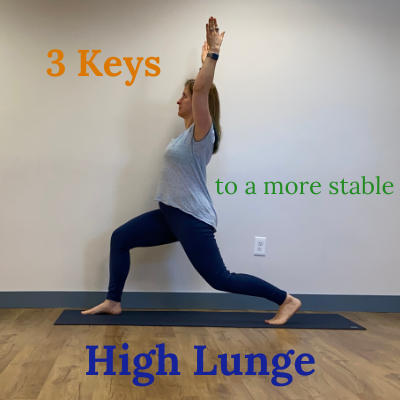Have you cried in a yoga class? You're not alone!
/Every once in a while a student will break down and cry during a yoga class. Depending on my relationship with the student and how much they’ve shared with me about what’s happening in their lives, I may go over to them and give them a reassuring pat on the back, offer them a tissue or just leave them alone. If this has happened to you in a class and you’ve found it surprising, (I mean, most of us come to yoga because it makes us feel better on most days) let me tell you a little story about what happened to me one day and why this is perfectly normal.
This is Simba. She (yes she, long story) was the first pet I ever had that was really and truly mine. I picked her out of the shelter myself when I was in grad school (the second time, another long story) in CT and had finally moved into an apartment that allowed cats. I could not WAIT to finally have a pet that was more than a goldfish at that point in my life. I’d been in school for a long time and finding housing that allowed anything more than a fish had been nearly impossible to afford. But FINALLY, the time had come!
Simba saw me through a lot of transitions in my life and was always by my side. The bad breakup with the longtime college boyfriend. The transition from music school to library school and being a freelance musician. My first “real job” as a librarian in NYC. My eventual meeting and marriage to my husband. We moved 4 times, between 2 states in the 8 years we had together.
And then one horrible night I came home to find that over the course of a few hours between when the pet sitter had last seen her and when I arrived she had become quite ill. I rushed her to the vet in the aftermath of a snowstorm but it was too late. She had a previously undetected tumor and was bleeding internally. I had to say goodbye.
I was, as you might imagine, beside myself with grief at loosing my dear friend. I had completed my yoga teacher training at this point so I knew what could happen. I didn’t go to class for two weeks. I just wasn’t ready.
Finally, I walked back into the studio. My teacher knew what had happened so she knew what to expect. And sure enough, the moment she put us into pigeon for the first time there it was. Sobbing like Niagara Falls. She gave me a pat on the back, a tissue and let me cry. And I knew I could do that and not one person in the class would even notice much less judge me for doing so.
So why did it happen? I can’t point you to a specific text, but it’s well known in the yoga world that emotions are stored in our bodies. Especially the ones that we haven’t quite dealt with yet. So when we finally start to bring movement to these places and loosen the physical tension, the emotional tension might just come pouring out.
And this isn’t unique to grief. Anger, jealousy, sadness, fear… anything you can experience can settle in the tissues of your body, just waiting to be released someday. It can come at the most unexpected times too.
But before you run for the hills and never take another yoga class again, let me assure you, this release that comes is a good thing. It can help us move on. It can help us resolve the unresolved. It can help us finally feel the thing that we haven’t been able to feel so that we can let it go and live a happier life. It’s actually a gift.
While we each have our unique human experience, these strong emotions are not unique to us. If you’re afraid that your fellow students or your teacher will think less of you let me tell you right now, I think you are brave! You survived everything that’s come to you to get to this moment. And if you come to my studio and you suddenly need to cry in a class don’t you worry. I’ll bring the tissues and no one else will probably even notice. And if they do, they will be sending you love and compassion because they’ve been through some stuff too and they know how it feels.
So go get back on your mat and let (to quote Tosha Silver) whatever needs to come, come and whatever needs to go, go. We’ve got your back.






































